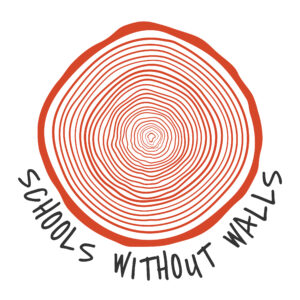Rampion OffShore Wind
Read artist David Watson's introduction to the sculptures
INTRODUCTION BY ARTIST DAVID WATSON:
What does home mean to you? It could make you think of:
- A place of safety to nurture family and welcome friends
- Space to grow and flourish
- Current issues – refugees, homelessness, and climate change (Earth as home)
- Homes that nurture our spirituality (mosques, churches, nature); on the coast to protect us (Martello towers); at sea (lighthouses); vessels to explore (sailing ships, the Nautilus, and spaceships)
- Homes to play and escape (beach huts, sheds)
- Our minds and bodies
Homes are essential for us and all living things. This project is about the habitats of those creatures at sea in the Marine Conservation Zone – an area identified as having a fantastic range of biodiversity and in need of protection. Sometimes it’s hard to imagine what’s there – but we can find clues:
- Rock pooling on the chalk beds reveals amongst other things shellfish, crabs, starfish, seahorses and the wonderful boring piddocks (angel wings) that live their whole life inside a hole they have drilled in a rock
- Beachcombing might present some mermaids’ purses (baby shark homes)
- Chalk – where does chalk come from? Millions of tiny sea creatures!
- Flint – where does flint come from? Why does it form into these knobbly shapes? Wow, what a story!
The children were presented with the theme of habitats and homes and provided with information and materials. They began to use their imaginations to write, draw, paint and build wonderful places for imaginary creatures and communities to live. Their sense of storytelling was inspiring and limitless. Embedding stories provided the starting point for the project and echoed the hidden stories found along the Undercliff walk. Some of the connections below were used to decide the forms, materials, colours and content of the artworks:
- St Bartholomew’s Church, Brighton – a local, popular, urban myth says its dimensions are based on those of Noah’s Ark. This links it to stories of sea level rise and flooding.
- The colour purple – used by royalty and priests for centuries as a symbol of wealth, purple dye was made from millions of sea shells. Blue and red have been used in the sculptures instead!
- Holes made by the wonderful boring piddocks.
- Lenses – in order for us to apply our own values of home to other creatures we probably need to completely change our perspectives. When we are born the lenses in our eyes turn the world upside down and we see it that way. After a while our brain turns it around again. This is a wonderful visual metaphor for innocence and the lenses used in ‘Homes’ turn the images upside down. Lenses encourage us to look in the direction of the MCZ and imagine what is beneath the waves.
- Climate change – The materials used have mostly come from ethical sources: the wood is from offcuts, the circular discs in the plinths are from old aeroplane wheels, the metal flanges come from waste water services, the concrete is from old paving slabs, the ballast is made of pebbles.
- A love of the Undercliff Path – the materials and forms have been sensitively chosen to visually belong to this beautiful, inspiring, brutal and sometimes scary place.
When you look at or through the sculptures, perhaps you will think of the habitats of those creatures under the sea and connect to your own feelings of home.
THANKS TO:
- The teachers and children at St John The Baptist, Longhill and St Margaret’s schools – they helped develop and fill the project with fun, imagination, energy and purpose. Extra thanks to Giuseppe Lozzi.
- Adur & Ouse Catchment Partnership
- The Rampion Fund
- Arts Council England
- Brighton & Hove City Council
- NaviLens
- Ovingdean Café & Liz Shreeve
- Blind Veterans UK
- Southern Water Clean Rivers and Seas Task Force
At the end of 2023, faced with the removal of the sculptures created by artist David Watson as part of the ‘Home’ project, ONCA and Schools Without Walls sought further funding in order to maintain the sculptures. As citizen-stewards of the Marine Conservation Zone we all have a responsibility to protect it – have a look and get involved with the community initiatives shared below. The sculptures installed on the Undercliff Path at the Marina and at Ovingdean continue to highlight the role of local organisations and citizens as stewards within this unique ecosystem we call home.
At the start of 2024, acknowledging their huge responsibility in protecting the MCZ, we welcomed Southern Water as funding partners for the project. It’s crucial that a wide range of interest groups work together to create safer habitats for human and non-human life. The Clean Rivers and Seas Task Force is an initiative by Southern Water that aims to reduce the use of storm overflows and flooding across the region.
Visit the ‘Home’ sculptures on the Undercliff Path at the Marina and Ovingdean and tell us about it on social media: Instagram, Facebook and Twitter.
Become a MCZ steward – get involved:
- Sussex Kelp Recovery Project
- The Living Coast Brighton
- Marine Conservation Society Beach Cleans
- March of the Mermaids
- Surfers Against Sewage Brighton
- The Deans Volunteers
- Leave No Trace Brighton
- Sussex Wildlife Trust
- Sussex Dolphin Project
- Wild Coast Sussex
- Sea Changers
- BHASS Explore
If you would like to find out more about ONCA projects click here.





